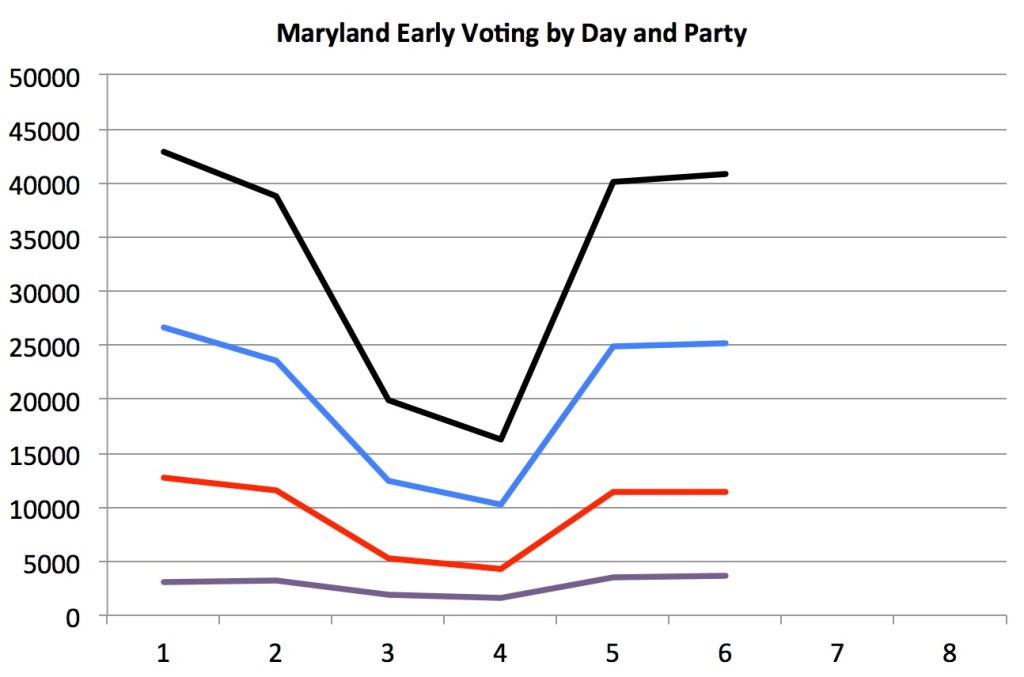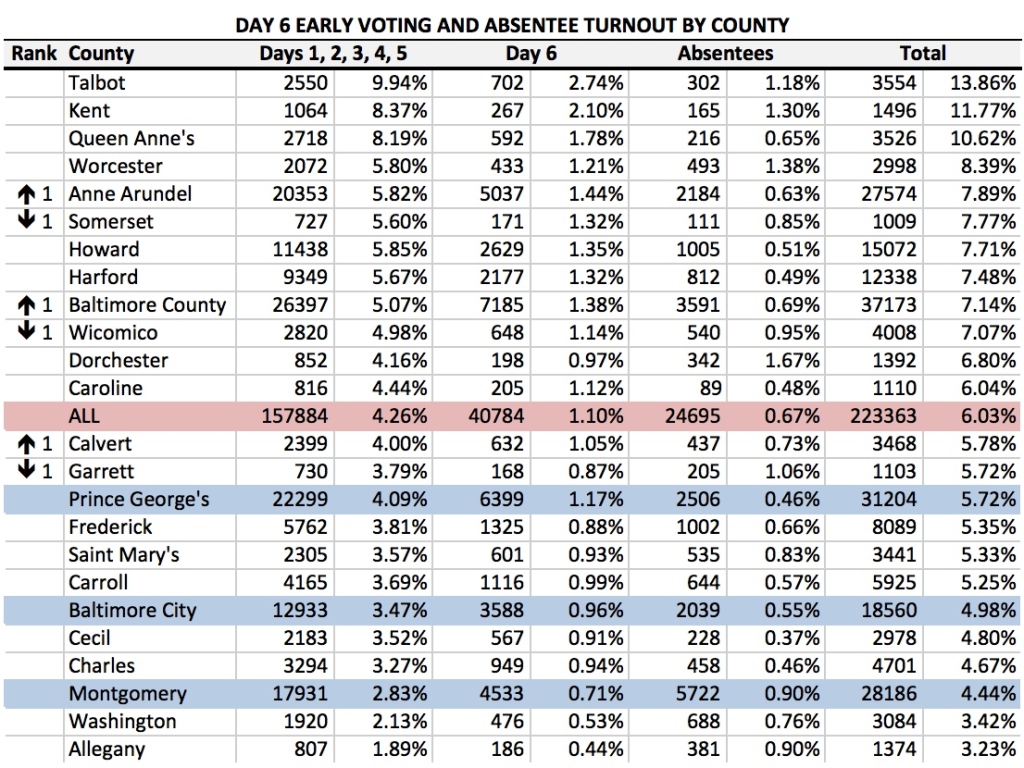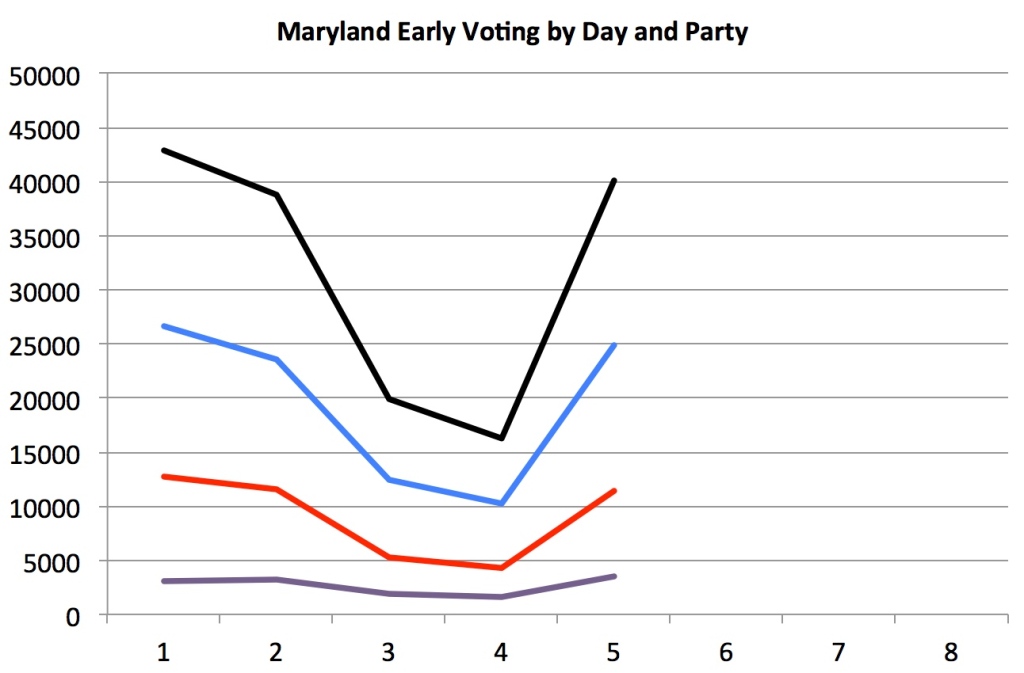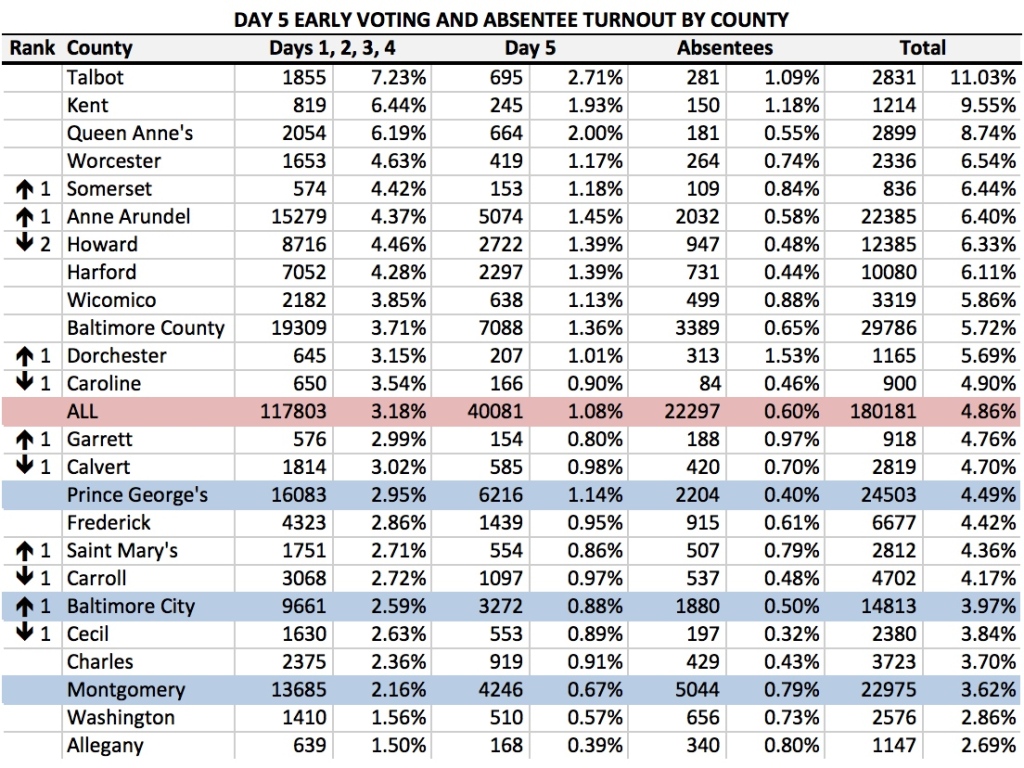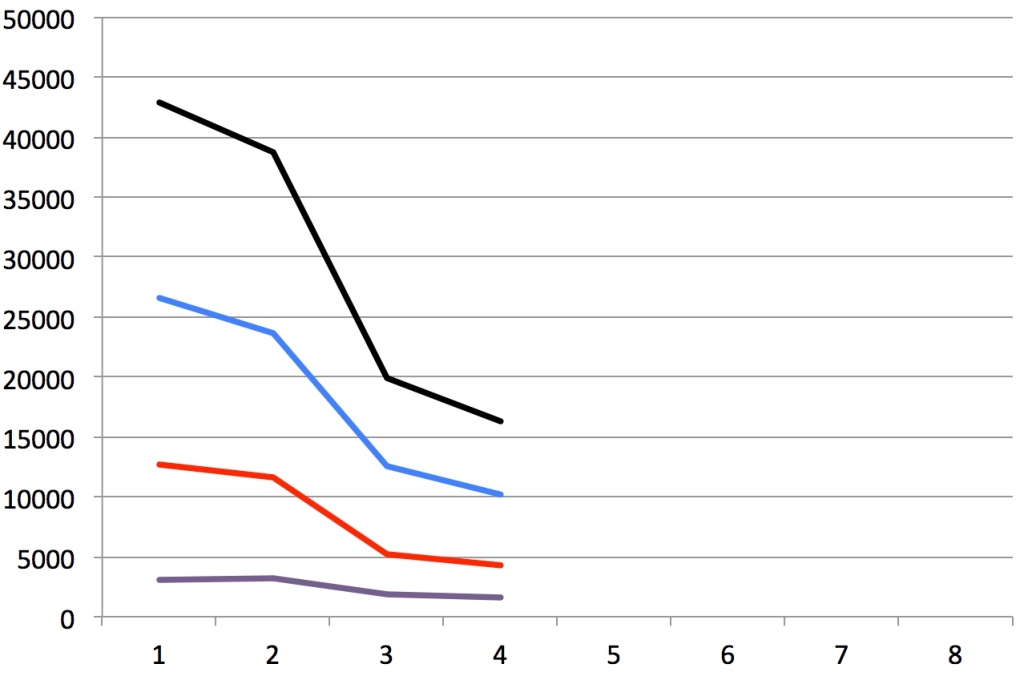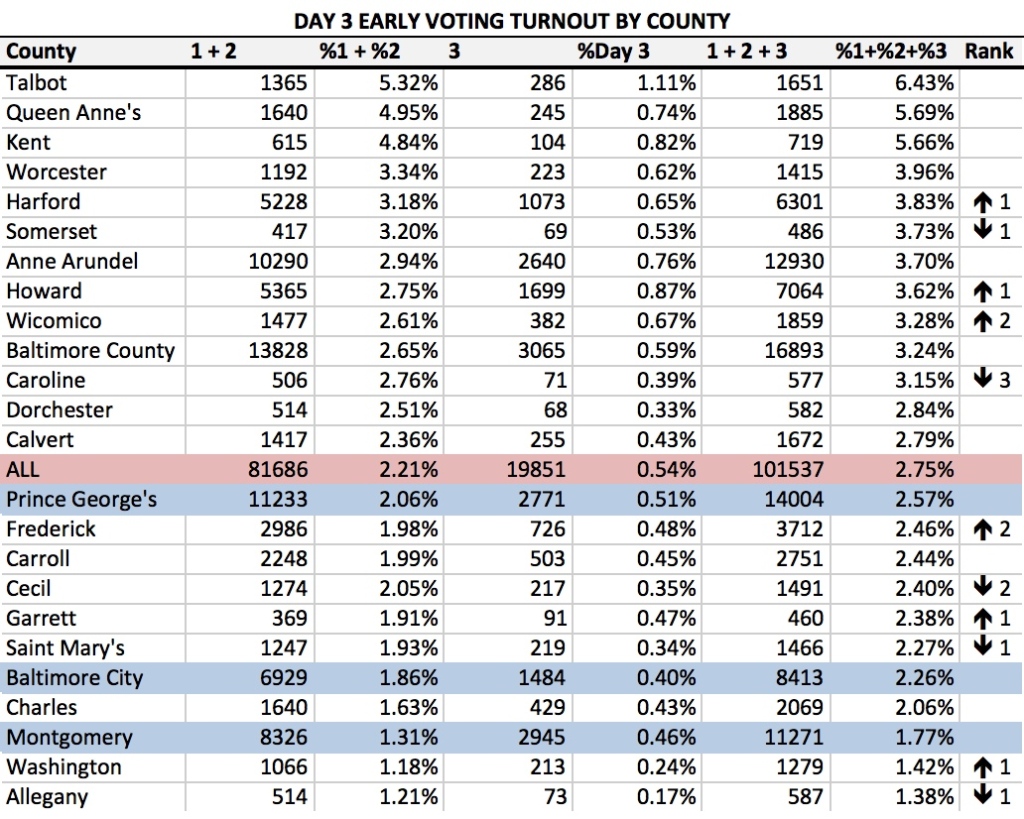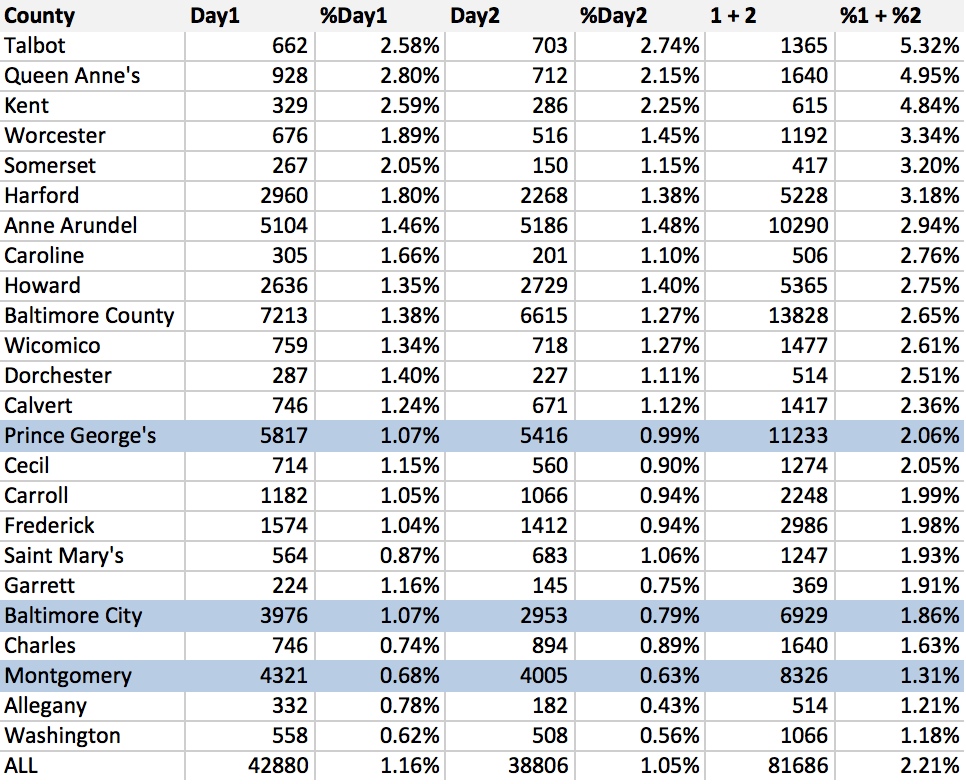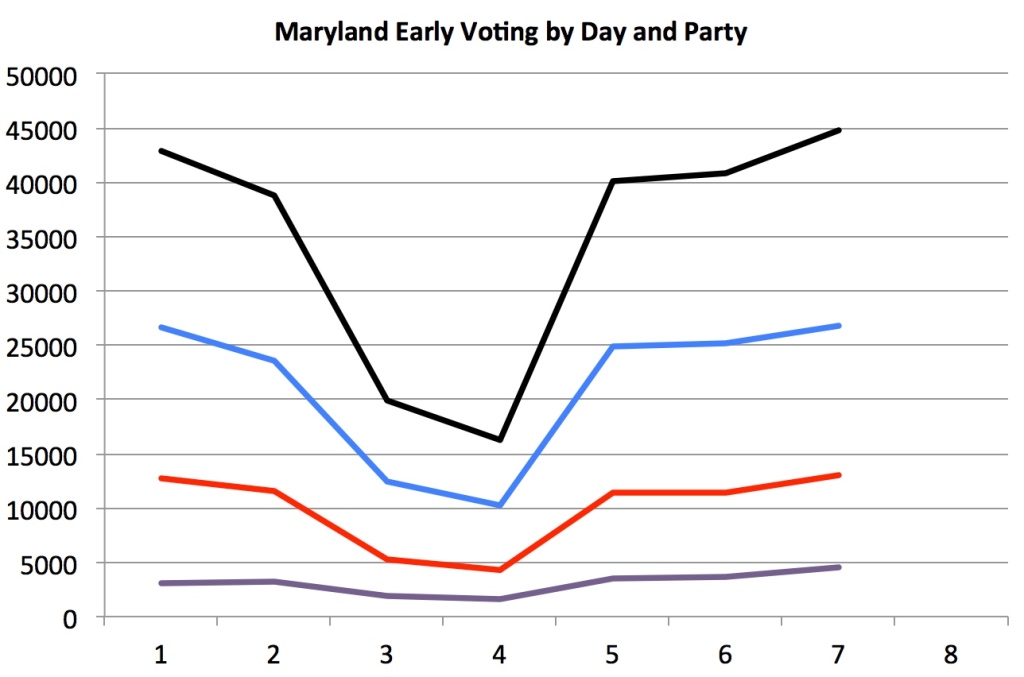 Black = All, Blue = D, Red= R, Purple = Unaffiliated
Black = All, Blue = D, Red= R, Purple = Unaffiliated
Early voting hit a new high of 44,718 on Wednesday, easily beating the previous high on the first day of early voting. Moreover, the total number of early voters, 243,386, now exceeds the 219,601 who participated in early voting in 2010.
Democrats Still Net Down from 2010
Contrary to my expectations expressed yesterday, however, the increase in the number of early voters has not yet benefited Democrats. While the number of Democratic early voters has increased by 9,344, the number of Republican early voters is up by 11,110 and unaffiliated voters by 3,301.
Unlike in 2010, when the overall Democratic turnout rate surpassed that of Republicans by 0.85%, Republicans are only 0.02% behind Democrats–a gain for Republicans over yesterday. As of Wednesday night, 7.35% of Democrats had voted compared to 7.33% of Republicans and 3.28% of unaffiliated voters.
Right now, 0.19% fewer unaffiliated voters have cast votes than in 2010–a bright spot for Brown as they are expected to break for Hogan in this election. However, the number of unaffiliated early voters is up because the number of registered unaffiliated voters has risen since 2010.
The following table breaks down the early vote and absentees by county:
As each day’s increase is a smaller percentage of the total, the changes in county rankings unsurprisingly have tended to decrease. In good news for Democrats, Howard and Prince George’s have both jumped one place from yesterday. Montgomery remains dead in the water in 21st place. In Talbot, an incredible 16.27% have voted.
One caution: while the early vote is now up over 2010, the number of absentee votes received remains much lower. While 27,569 absentee ballots have been returned thus far, a total of 87,813 absentee ballots were cast in 2010. So the total of early plus absentee ballots cast in 2014 does not yet exceed the total of the same from 2010. Unless early voting jumps quite a bit tomorrow, that will remain true at the conclusion of early voting.


